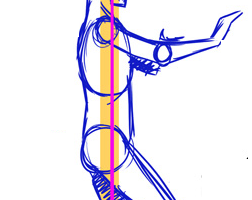(leggi l’articolo in italiano)
One requirement, to be aware during taijiquan practice, is to assume and maintain a natural body posture in which our body barycenter overlaps the lower dantian
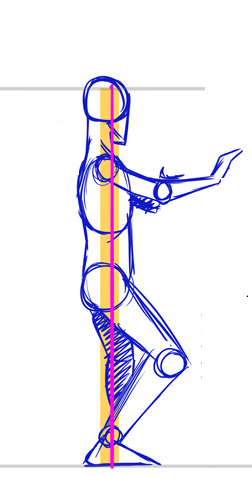
More and more often, people approaching taijiquan, have a posture far from that shown in the above image.
As well as “common reasons”, computers and mobile phones also contribute significantly to change our natural posture and, nowadays, the increasing time, spent with and on these devices, is the main cause for “body misalignment”
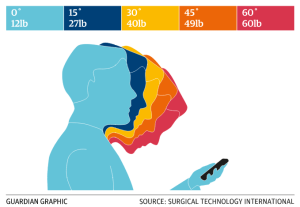
Our body self-balances to keep its center of gravity in its place: if the head goes forward, the backside goes back and, as a consequence, this posture becomes our balance stance both in standing and in motion.

We can imagine there are three weights associated with the upper part of the body (hands), the central part (loins) and the lower part (feet). Our body balances these weights both in standing and in motion, to avoid falls
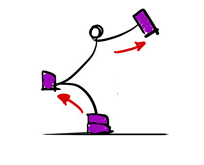
Restoring the body natural posture is the primary target for a taijiquan beginner; the postural aspect is deeply studied starting from qigong exercises (the Zhang Zhuang exercise ie Standing Like a Tree)

It’s like sinking the three weights on the legs / feet
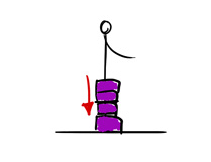
Therefore, on starting an exercise or a sequence, a practitioner should care about:
- Lifting the crown of the head
- Pulling the chin straight back, towards the neck (to straighten the cervical spine)
- Sinking shoulders
- Relaxing the chest
- Breathing by using the diaphragm
- Retroverting the pelvis (to straighten the lumbar spine)
- Keeping knees slightly bent
- Distributing the body weight on the feet
For a taijiquan beginner, the above list contains a lot of checks to perform in parallel, causing some disorientation. This feeling grows as he/she realizes that the above rules apply in motion, too.
Every element in the list is relevant. For a taijiquan beginner, I suggest concentrating on point 2 (pull the chin straight back) and on point 5 (retrovert the pelvis) as they influence the remaining list elements.

